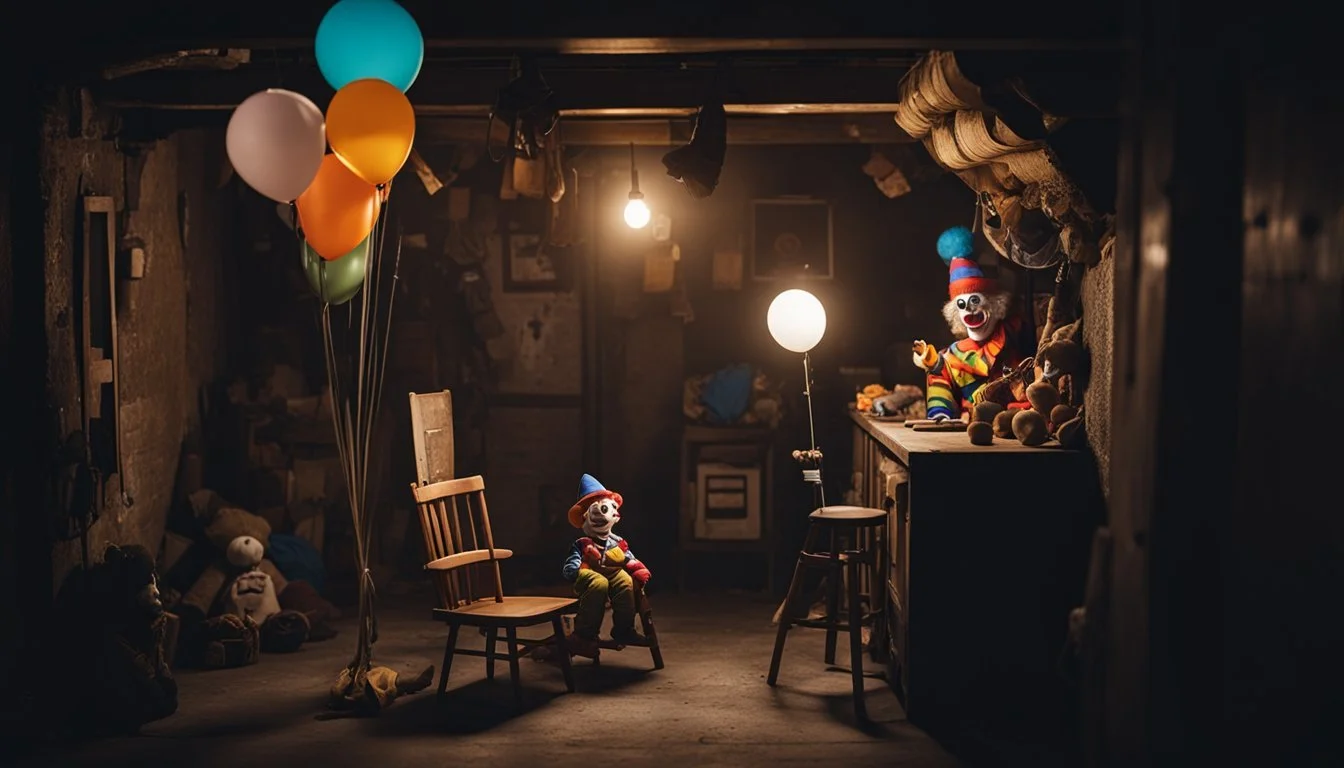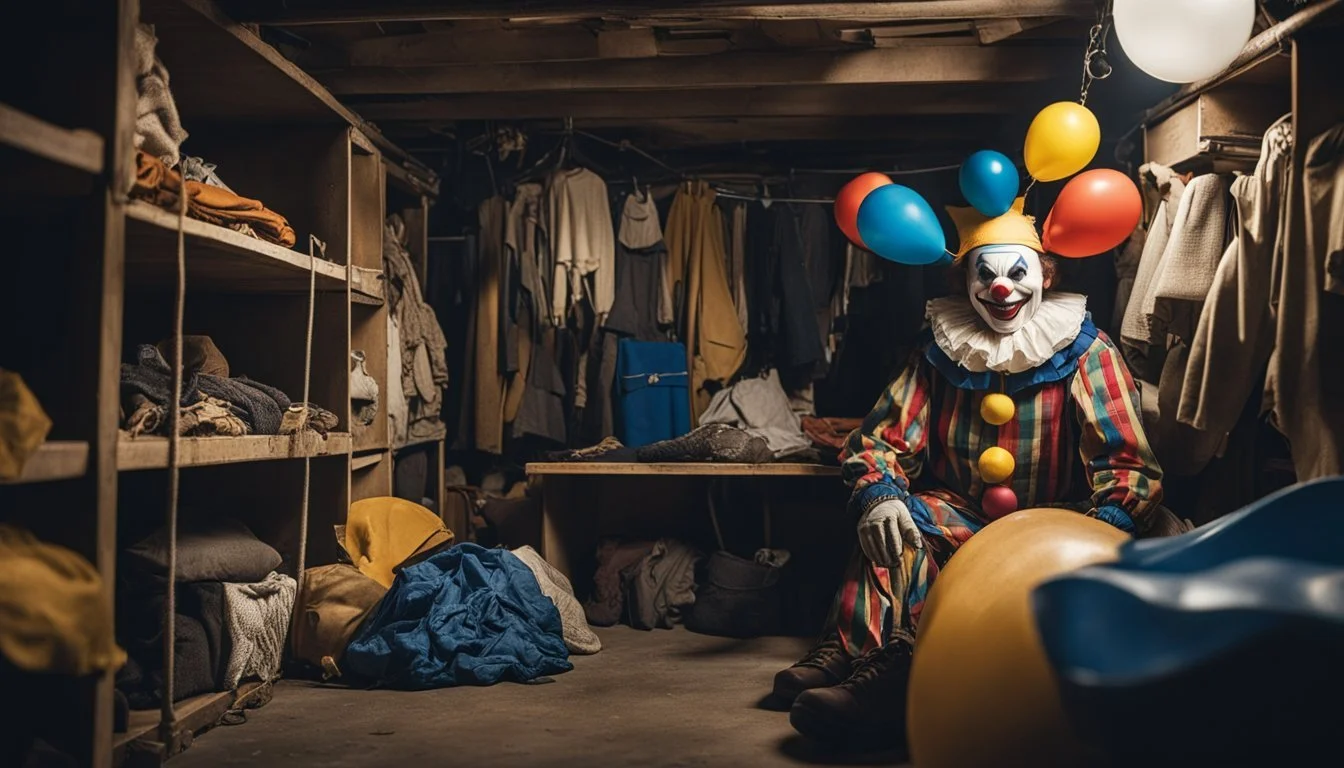Unmasking the Killer Clown: Documentaries Expose John Wayne Gacy's Dark Legacy
John Wayne Gacy's heinous crimes shocked the nation and left an indelible mark on American criminal history. The serial killer's acts, which occurred between 1972 and 1978, have been the subject of numerous documentaries over the years. These films aim to shed light on Gacy's background, his victims, and the investigation that led to his capture.
Documentaries about the John Wayne Gacy murders offer viewers a detailed look into one of the most notorious criminal cases of the 20th century. They typically explore Gacy's double life as a respected community member and entertainer who secretly committed brutal murders. Through interviews, archival footage, and expert analysis, these documentaries attempt to unravel the complexities of Gacy's psychology and the impact of his crimes on the victims' families and society at large.
1) Conversations with a Killer: The John Wayne Gacy Tapes (2022)
"Conversations with a Killer: The John Wayne Gacy Tapes" is a chilling documentary series that delves into the heinous crimes of John Wayne Gacy. The series utilizes never-before-heard audio recordings from Gacy's interrogations to provide unique insights into his psyche.
The documentary explores Gacy's murder spree, which took place between 1972 and 1978 in Chicago, Illinois. It details how he killed at least 33 teenage boys and young men during this period.
Interviews with individuals close to the case offer additional perspectives on the investigation and its impact. The series also examines how Gacy managed to maintain a facade of normalcy while committing his atrocities.
Through a combination of archival footage and new interviews, the documentary paints a comprehensive picture of Gacy's crimes. It sheds light on how he preyed on vulnerable victims while maintaining connections with powerful figures in his community.
The three-part series premiered on Netflix in 2022, offering viewers a disturbing glimpse into the mind of one of America's most notorious serial killers.
2) The Clown and the Candyman
The Clown and the Candyman (2021) is a documentary mini-series that explores the heinous crimes of two notorious serial killers: John Wayne Gacy and Dean Corll. This four-part series delves into the connections between these seemingly unrelated murderers.
The documentary reveals how Gacy and Corll targeted young men and boys in different parts of the United States during the 1970s. It examines the shocking possibility that their crimes were linked to a larger network of pedophiles.
Through interviews with experts and investigators, The Clown and the Candyman presents new evidence and theories about the extent of these killers' operations. The series also explores how Gacy and Corll managed to evade detection for years.
Viewers gain insight into the investigation processes that eventually led to the apprehension of both killers. The documentary highlights the challenges faced by law enforcement in uncovering the full scope of their crimes.
The Clown and the Candyman offers a chilling look at two of America's most infamous serial killers and raises disturbing questions about potential connections between their cases.
3) Devil in Disguise
"John Wayne Gacy: Devil in Disguise" is a 2021 TV mini-series that delves into the chilling story of one of America's most notorious serial killers. The documentary provides a comprehensive look at Gacy's crimes through various perspectives.
The series features interviews with key figures involved in the case, including Terry Sullivan, Philip Hersh, and Jay Levine. It also incorporates Gacy's own words, offering a disturbing glimpse into his mindset.
"Devil in Disguise" explores the lasting impact of Gacy's crimes on those affected by his actions. It examines the investigation, arrest, and aftermath of his gruesome murders committed between 1972 and 1978.
The documentary goes beyond the well-known facts, suggesting that some believe the full truth about Gacy's crimes remains concealed. This adds an element of ongoing mystery to the already horrifying case.
Premiering on Peacock, the series aims to provide a dark, definitive history of Gacy's crimes. It offers viewers a comprehensive look at the man known as the "Killer Clown" and his impact on American criminal history.
IMDB: John Wayne Gacy: Devil in Disguise
4) John Wayne Gacy: Defending a Monster
"John Wayne Gacy: Defending a Monster" (2010) is a documentary that offers a unique perspective on the infamous serial killer case. The film focuses on Sam Amirante, Gacy's defense attorney during his trial.
Directed by Marc Menet and Scott Prestin, the documentary provides insights into the legal proceedings and challenges faced by Amirante. It explores the complexities of defending one of America's most notorious criminals.
The film features interviews with Amirante himself, offering firsthand accounts of his interactions with Gacy. It delves into the legal strategy employed during the trial and the ethical dilemmas faced by defense attorneys in high-profile cases.
"Defending a Monster" examines the importance of the Sixth Amendment and the right to legal representation. It highlights the role of defense attorneys in ensuring a fair trial, even for those accused of heinous crimes.
The documentary presents a balanced view of the case, incorporating both legal and psychological aspects. It offers viewers a deeper understanding of the judicial process and the challenges involved in defending a serial killer.
5) Serial Killer: Devil Unchained (2019)
Serial Killer: Devil Unchained explores the crimes of John Wayne Gacy through a fresh lens. The documentary series delves into newly uncovered evidence and interviews with key figures involved in the case.
Investigative journalist Maria Ridulph leads the documentary, examining the possibility that Gacy may have had accomplices. She interviews former law enforcement officers, forensic experts, and even Gacy's sister Karen.
The series presents compelling arguments that challenge some long-held beliefs about the case. It raises questions about whether all of Gacy's victims have been identified and if he may have committed murders in other states.
Devil Unchained offers a comprehensive look at Gacy's life, from his troubled childhood to his final days on death row. It provides viewers with a deeper understanding of one of America's most infamous serial killers.
6) To Catch a Killer (1992)
"To Catch a Killer" is a two-part television miniseries that dramatizes the investigation and capture of John Wayne Gacy. Directed by Eric Till, the film stars Brian Dennehy as Gacy.
The miniseries focuses on the efforts of Des Plaines police detective Joseph Kozenczak to build a case against Gacy. It depicts the initial disappearance of Robert Piest and the subsequent investigation that uncovered Gacy's crimes.
Brian Dennehy's portrayal of Gacy received critical acclaim. The actor's performance captures Gacy's charming public persona as well as his darker, murderous side.
"To Catch a Killer" explores the psychological aspects of Gacy's crimes and the impact on the community. It shows how Gacy's respected status as a local businessman and volunteer clown allowed him to avoid suspicion for years.
The film recreates key moments in the investigation, including the search of Gacy's house and the discovery of bodies buried in his crawl space. It provides insight into the detective work that led to Gacy's arrest and conviction.
7) John Wayne Gacy: Buried Secrets (2022)
This documentary explores the chilling case of John Wayne Gacy, focusing on the gruesome discoveries made beneath his house. It delves into the excavation process that uncovered the remains of his victims.
The film features interviews with investigators who worked tirelessly to unearth the bodies from Gacy's crawl space. It provides a detailed account of the forensic techniques used to identify the victims.
Viewers gain insight into the psychological toll the case had on law enforcement and forensic experts. The documentary also examines how advances in DNA technology have helped identify previously unknown victims years later.
"John Wayne Gacy: Buried Secrets" offers a sobering look at the aftermath of Gacy's crimes. It highlights the ongoing efforts to bring closure to families of missing persons potentially connected to the case.
8) The Killers Within: John Wayne Gacy
"The Killers Within: John Wayne Gacy" (2011) is a documentary that delves into the psychology of the notorious serial killer. It features interviews with experts and individuals close to the case.
The film explores Gacy's troubled childhood and early signs of his deviant behavior. It examines how he managed to maintain a respectable public image while committing heinous crimes.
Archival footage and crime scene photographs provide a chilling look into Gacy's double life. The documentary also discusses the investigation that led to his arrest and conviction.
Viewers gain insight into the methods used by law enforcement to build their case against Gacy. The film touches on the impact of his crimes on the victims' families and the community.
"The Killers Within" offers a comprehensive overview of one of America's most infamous serial killers. It serves as a haunting reminder of the darkness that can lurk behind seemingly normal facades.
9) Murder Made Me Famous: John Wayne Gacy
"Murder Made Me Famous: John Wayne Gacy" is a television episode that aired in 2018. It explores the notorious crimes of John Wayne Gacy, who murdered 33 young men and boys in the 1970s.
The episode delves into Gacy's background and his reputation as the "Killer Clown." It examines how he lured victims to his home and committed his heinous acts.
Directed by Adam Dietrich, the show features reenactments and interviews to provide insight into Gacy's crimes. It highlights the discovery of bodies buried in the crawl space beneath Gacy's house.
The episode draws connections between Gacy and Stephen King's character Pennywise the Clown. It suggests that Gacy may have been an inspiration for this iconic horror figure.
"Murder Made Me Famous" offers a comprehensive look at one of America's most infamous serial killers. It presents facts about the case while exploring the public's fascination with Gacy's crimes.
10) John Wayne Gacy: A Monster in Disguise
John Wayne Gacy: Devil in Disguise (2021) is a six-part docuseries that provides an in-depth look at one of America's most infamous serial killers. The series features rare footage of Gacy himself, offering viewers a chilling glimpse into his psyche.
The documentary explores Gacy's life and crimes through interviews with those directly involved in the case. It includes conversations with law enforcement officials, survivors, and family members of the victims.
A unique aspect of this series is its focus on the possibility that Gacy may have had accomplices. It examines theories that suggest the full truth about his crimes has yet to be uncovered.
The docuseries also delves into Gacy's early life and his public persona as a community-oriented businessman and part-time clown. This contrast between his public image and private atrocities adds a disturbing dimension to the narrative.
Through its comprehensive approach, John Wayne Gacy: Devil in Disguise offers viewers a thorough examination of the case and its lasting impact on those involved.
Overview of the John Wayne Gacy Murders
John Wayne Gacy committed a series of brutal murders between 1972 and 1978 in Chicago, Illinois. He targeted young men and boys, killing at least 33 victims before his arrest in December 1978.
Timeline of Events (1972-1978)
Gacy's killing spree began in 1972 with the murder of Timothy McCoy. Over the next six years, he continued to lure victims to his home, where he sexually assaulted and killed them.
In 1975, Gacy's crimes escalated. He buried most of his victims in the crawl space under his house.
By 1978, Gacy's behavior became increasingly reckless. He attacked Jeff Rignall in his car on March 21, 1978, using chloroform to subdue him.
The final victim, Robert Piest, disappeared on December 11, 1978. This led to Gacy's arrest on December 21, 1978, ending his six-year reign of terror.
Victim Profiles
Gacy's victims were primarily young males, ranging from teenagers to men in their twenties. Many were lured with promises of construction work or money.
Some victims were hitchhikers or individuals Gacy met at bus stations. Others were employees of his contracting business.
The majority of victims came from working-class backgrounds. Several were high school students or recent graduates.
Gacy targeted vulnerable individuals, often those estranged from their families or struggling with personal issues.
Gacy's Modus Operandi
Gacy used his charm and status as a respected community member to gain trust. He often posed as a police officer or offered employment to attract victims.
Once lured to his home, Gacy would typically offer alcohol or drugs to his victims. He then used a "handcuff trick" to restrain them.
Gacy sexually assaulted his victims before strangling them with a rope or garrote. He referred to this as the "rope trick."
After killing, Gacy buried most victims in the crawl space beneath his house. He disposed of later victims in the Des Plaines River when the crawl space became full.
Investigation and Arrest
The investigation into John Wayne Gacy's crimes unfolded over several years, involving multiple law enforcement agencies and dedicated personnel. Key breakthroughs led to Gacy's eventual arrest and the discovery of numerous victims.
Initial Clues and Breakthroughs
The disappearance of 15-year-old Robert Piest on December 11, 1978, marked a turning point in the Gacy case. Piest was last seen at a pharmacy where Gacy had been working. This connection prompted police to focus their attention on Gacy.
Investigators obtained a search warrant for Gacy's home on December 13, 1978. During the search, they discovered suspicious items, including driver's licenses and jewelry belonging to missing young men.
A foul odor emanating from the crawl space under Gacy's house raised further suspicions. This led to the grim discovery of multiple bodies buried beneath the property.
Key Investigative Personnel
Des Plaines Police Detective Joseph Kozenczak played a crucial role in the investigation. He led the initial inquiry into Robert Piest's disappearance and pursued Gacy as a suspect.
Cook County Sheriff's Police Investigator Greg Bedoe was instrumental in gathering evidence and interviewing witnesses. His efforts contributed significantly to building the case against Gacy.
Forensic experts, including Dr. Robert Stein, the Cook County Medical Examiner, worked tirelessly to identify victims and gather crucial physical evidence.
Legal Proceedings
Gacy was arrested on December 21, 1978, following the discovery of multiple bodies on his property. He was initially charged with the murder of Robert Piest.
As the investigation progressed, additional charges were filed. Gacy was ultimately indicted on 33 counts of murder.
The trial began on February 6, 1980, in Cook County, Illinois. Prosecutors sought the death penalty, while Gacy's defense team argued for an insanity plea.
After a six-week trial, the jury deliberated for less than two hours before finding Gacy guilty on all counts on March 13, 1980.







